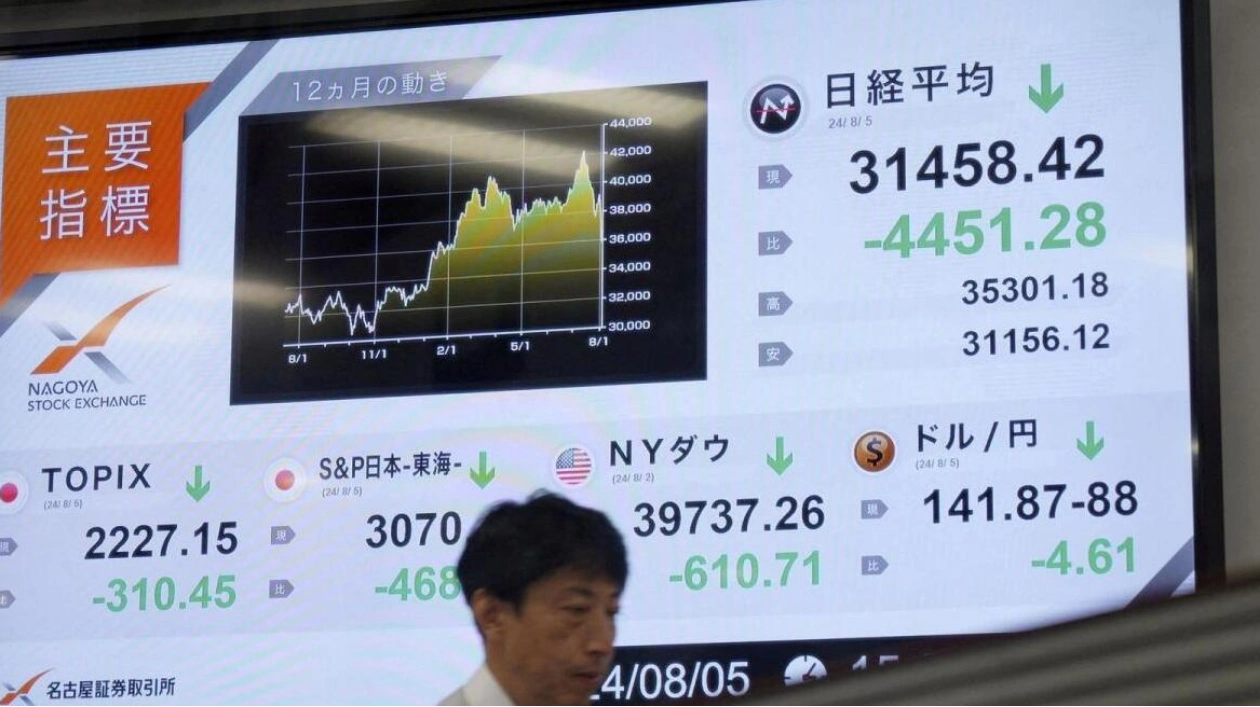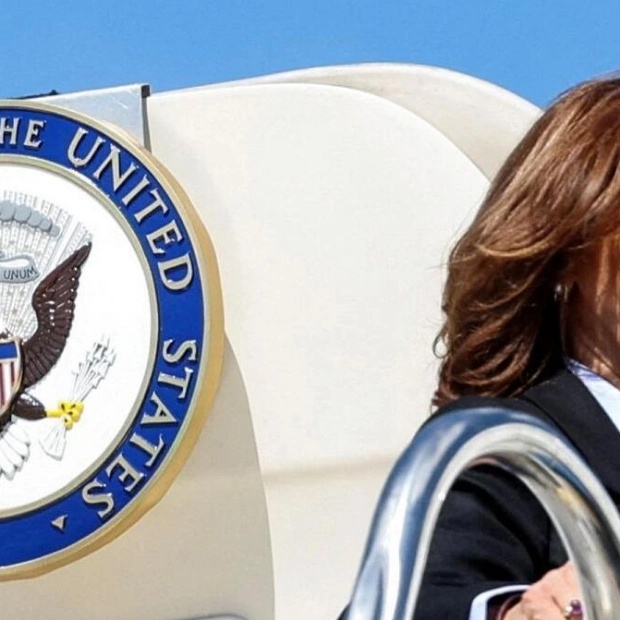Wall Street appeared poised to mirror a worldwide stock market decline, with Japanese shares experiencing a loss that surpassed the 1987 'Black Monday' level, amid concerns about a potential U.S. recession. Investors were seen retreating from risky assets, anticipating that rate reductions would be necessary to stimulate economic growth. Nasdaq futures dropped by more than 4%, and S&P 500 futures declined approximately 3%, following a sell-off that originated in Japan and extended to European markets, painting a sea of red.
The CBOE's volatility index, often referred to as Wall Street's fear gauge, which measures market turbulence, surged to over 30 points, reaching 53.55, marking its highest point since March 31, 2020. Japan's Nikkei average concluded the day 12.40% lower at 31,458.42, its steepest single-day drop since October 1987, while the broader Topix index fell 12.48% to 2,220.91. Jim Reid, global head of macro and thematic research, highlighted that the magnitude of market movements would likely have been less significant if it weren't for the typically thinly-traded summer months.
These market shifts were rooted in actual economic conditions, according to Reid, citing the Bank of Japan's initiation of a hiking cycle after two decades, along with high tech valuations and a weak U.S. payrolls report. European shares hit near six-month lows, with only a few stocks trading in positive territory. The pan-European STOXX 600 index dropped about 3% to 483.17 points, its lowest since February 13. Major indices like Germany's DAX, France's CAC 40, Britain's FTSE, and Spain's IBEX 35 all saw declines exceeding 2%.
The safe-haven yen and Swiss franc saw significant gains as carry trades unraveled, prompting speculation that some investors were liquidating profitable trades to cover losses elsewhere. This wave of selling was so intense that it triggered circuit breakers across Asian stock exchanges. Treasury bonds became sought after, with U.S. 10-year yields falling to 3.721%, their lowest since mid-2023. A notably weak July payrolls report led markets to price in a 78% chance that the Federal Reserve would not only cut rates in September but also reduce by 50 basis points.
Bruno Schneller, managing partner at Erlen Capital Management, pointed out that signs of economic weakness in the U.S. are becoming apparent, with negative indicators from hiring, retail sales, and PMI reports. However, he noted that data such as GDP and trade remained stable as the prospect of autumn U.S. rate cuts loomed. Analysts at Goldman Sachs estimated a 25% likelihood of a U.S. recession, while JPMorgan analysts were more pessimistic, assigning a 50% probability.
Economist Michael Feroli anticipates a 50 basis point cut at the September Fed meeting, followed by another 50 basis point cut in November. Investors will be looking at the ISM non-manufacturing survey for insights into the service sector's employment situation, with expectations of a rebound to 51.0 after June's unexpected drop to 48.8. This week also brings earnings reports from major companies like Caterpillar and Walt Disney, providing further insights into consumer and manufacturing health.
The significant drop in Treasury yields overshadowed the U.S. dollar's typical safe-haven status, pushing the greenback down 0.5% against a basket of major currencies. The dollar fell as much as 3.28% against the Japanese yen before recovering slightly, while the euro saw a 2.3% decline against the yen. The Swiss franc benefited significantly from the flight from risk, with the dollar falling around 1% and hovering at six-month lows.
Jonas Goltermann, deputy chief markets economist at Capital Economics, noted that the shift in expected interest rate differentials against the U.S. has outweighed the deterioration in risk sentiment. If the recession narrative gains traction, the dollar could rebound as safe-haven demand becomes the primary driver in currency markets. Investors have also increased bets that other major central banks, including the European Central Bank, will adopt more aggressive easing measures.
In commodity markets, gold lost some of its safe-haven appeal, falling around 2.3% to $2,387 an ounce. Oil prices eased as concerns about global energy demand overshadowed supply worries due to the escalating conflict in the Middle East. Brent crude fell 123 cents to $75.58 a barrel, while U.S. crude dropped 135 cents to $72.15 per barrel.






